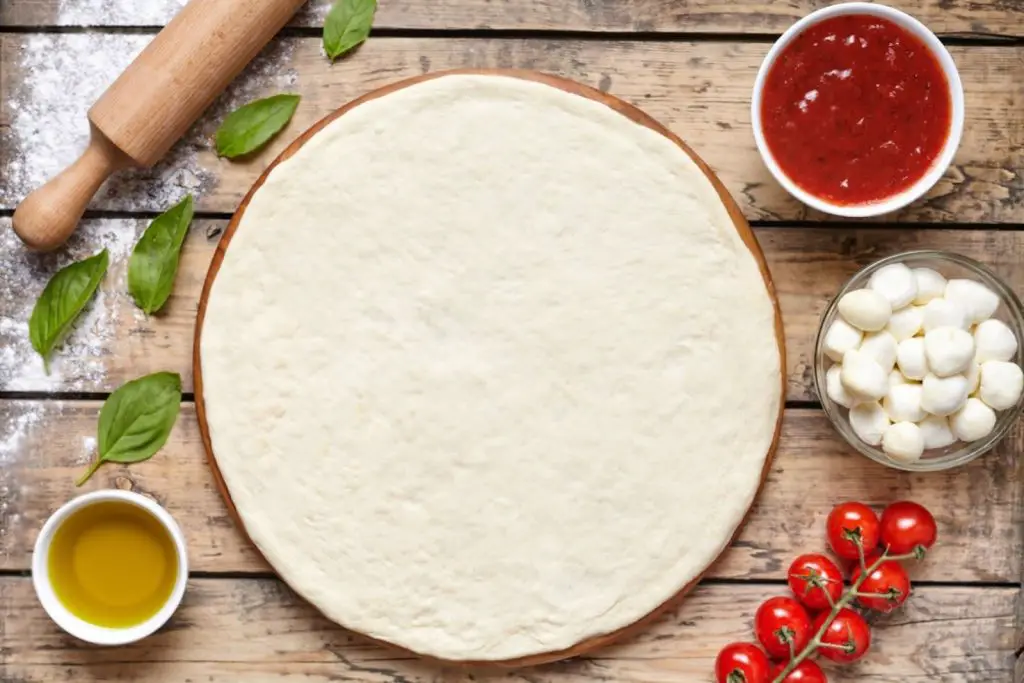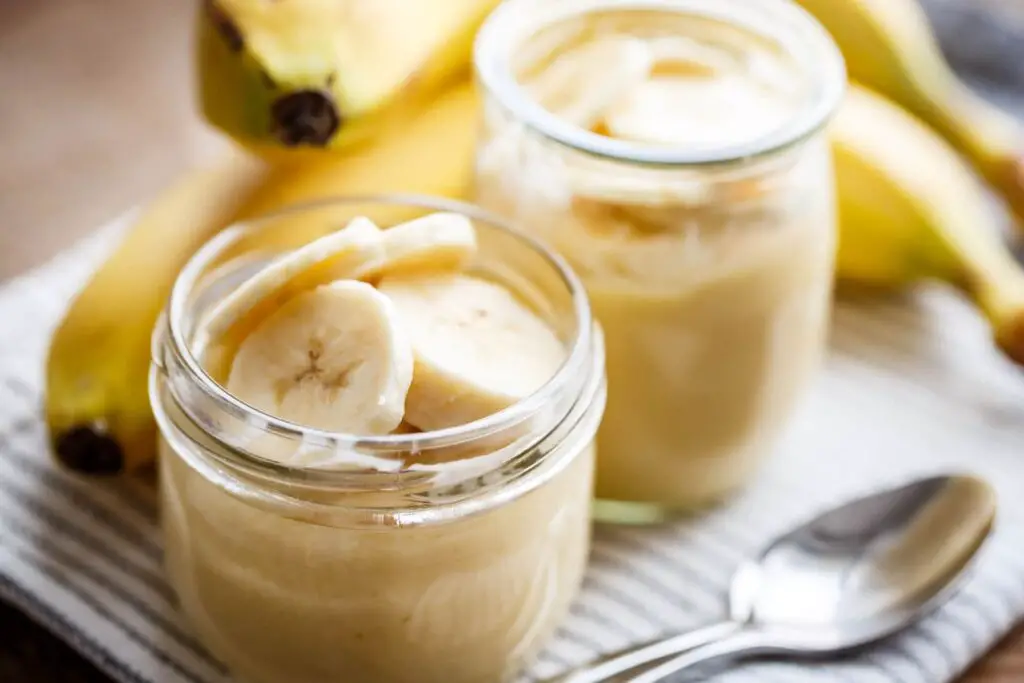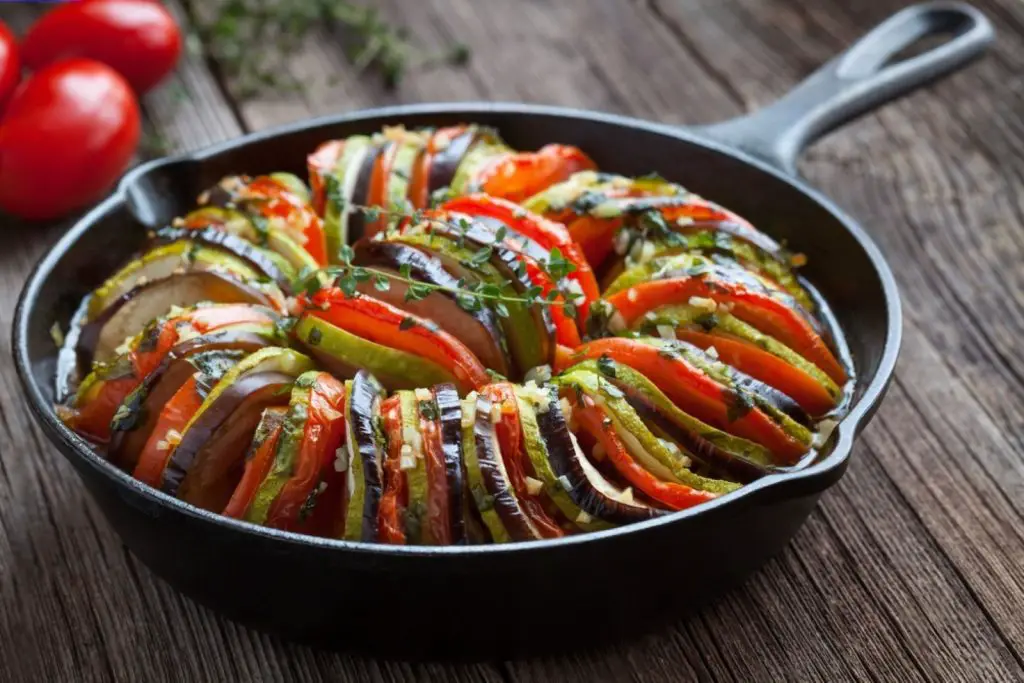
Kolaches are delicious pastries of Czech origin that are popular worldwide. They are typically made with a soft, slightly sweet dough and filled with various sweet or savory fillings, such as fruit, cheese, or sausage. If you find yourself with a surplus of freshly baked kolaches or want to save some for later, freezing them is a great option. By following a few simple steps, you can freeze kolaches properly and ensure they maintain their taste and texture. This article presents a comprehensive guide on how to freeze kolaches for future enjoyment.
Here’s a step-by-step guide on freezing kolaches:
Step 1: Choose fresh kolaches
When it comes to freezing kolaches, selecting fresh ones is crucial to ensure the best quality after thawing. Freshly baked kolaches have a superior taste, texture, and aroma, making them more enjoyable when consumed later. Freezing kolaches on the day they are made is ideal because it captures them at their peak freshness.
Freshly baked kolaches have a soft and tender dough, and their fillings are often moist and flavorful. As time passes, the quality of kolaches can decline. The dough may become dry and lose its softness, while the fillings can lose their moisture and taste less appealing. Therefore, freezing kolaches as soon as possible after baking helps to preserve their original taste and texture.
By choosing fresh kolaches for freezing, you ensure that you are starting with the best possible product. This step sets the foundation for maintaining the kolaches’ quality throughout the freezing and thawing process. So, whether you have just bought kolaches from a bakery or have freshly baked them at home, freezing them promptly will help retain their deliciousness for future enjoyment.
Remember, if the kolaches are not fresh when you initially obtain them, freezing may not significantly improve their quality. Freezing is most effective when applied to kolaches that are already at their best. So, be mindful of the freshness factor and prioritize choosing freshly baked kolaches for the freezing process.
Can you freeze homemade kolaches?
Yes, you can freeze homemade kolaches. To freeze homemade kolaches, allow them to cool completely after baking. Once cooled, individually wrap each kolache tightly in plastic wrap or place them in airtight containers or freezer bags. Properly stored, homemade kolaches can be frozen and enjoyed later, maintaining their flavor and quality.
Step 2: Prepare the kolaches
Before freezing your kolaches, it’s important to prepare them properly to ensure optimal results when thawed. There are a few key considerations to keep in mind during the preparation process.
If your kolaches have any toppings or glazes, it is recommended to remove them before freezing. Toppings and glazes can contain ingredients that don’t freeze well or may alter the texture and taste of the kolaches during the thawing process. For example, a sugary glaze might become sticky or lose its consistency when frozen and thawed, resulting in a less desirable eating experience. By removing these toppings or glazes, you can prevent any potential texture or taste issues.
To remove toppings or glazes, simply scrape them off gently using a spatula or knife. Take care not to damage the kolach itself. If the topping or glaze is stubborn or too sticky to remove easily, you can lightly heat the kolaches in the oven for a few minutes to soften them, making it easier to remove the unwanted elements.
Additionally, if you have a variety of flavored kolaches, it’s beneficial to separate them into different groups before freezing. This step helps with easy identification and selection when you want to enjoy a specific flavor later on. By organizing and grouping the kolaches according to their flavors, you can avoid the hassle of rummaging through the freezer or accidentally thawing more kolaches than desired.
Consider using individual wrappings or dividers to separate the different flavors within the storage container. This way, you can conveniently retrieve the specific kolach flavor you’re in the mood for without having to thaw and refreeze the entire batch.
Should I freeze kolaches before or after baking them?
It is generally recommended to freeze kolaches before baking them. Prepare the kolaches as usual, including shaping and filling them, but stop before the baking step. Place the unbaked kolaches on a baking sheet and freeze them until solid. Once frozen, transfer them to airtight containers or freezer bags, and when ready to enjoy, simply bake them from frozen, adding a few extra minutes to the baking time as needed. This method helps maintain the freshness and texture of the kolaches when they are eventually baked.
Step 3: Wrap individually
When freezing kolaches, it’s essential to wrap each individual pastry tightly with plastic wrap or aluminum foil. This step serves two main purposes: preventing the kolaches from sticking together and allowing you to thaw only the desired quantity without affecting the rest.
Individually wrapping the kolaches creates a protective barrier between them, preventing them from sticking together during the freezing process. If kolaches freeze together, they can become difficult to separate without damaging their shape or texture. By wrapping each kolach individually, you ensure that they maintain their distinct form and are easy to handle when it’s time to thaw and enjoy them.
Plastic wrap or aluminum foil are excellent materials for wrapping kolaches because they provide a secure seal. The wrap should be tight enough to prevent air from reaching the pastries, as exposure to air can lead to freezer burn and a loss of quality. Ensure that the entire kolach is covered and sealed properly, paying attention to any openings or exposed areas.
Moreover, wrapping kolaches individually allows you to thaw only the desired quantity at any given time. This is particularly beneficial when you don’t want to thaw the entire batch of frozen kolaches. By individually wrapping them, you have the flexibility to select and thaw only the number of kolaches you intend to consume, while the rest remain safely frozen for later enjoyment.
Thawing only what you need helps preserve the quality and freshness of the remaining frozen kolaches. It also reduces the risk of repeatedly freezing and thawing the entire batch, which can negatively affect the texture and taste of the pastries over time.
By taking the time to wrap each kolach individually, you ensure that they stay separate, maintain their shape, and are easy to handle. This method of packaging also offers convenience by allowing you to thaw only the desired quantity, resulting in a more enjoyable and efficient freezing and thawing process for your kolaches.
Step 4: Place in a freezer-safe container
After individually wrapping each kolach, the next step is to transfer them into a freezer-safe container. This step is important for maintaining the quality and freshness of the kolaches during the freezing process. Here’s why it’s crucial and what you should consider when choosing a container:
- Protection from freezer burn: Freezer burn occurs when food is exposed to air and moisture in the freezer. It can cause dehydration and lead to a deterioration in texture and taste. Placing the wrapped kolaches in a freezer-safe container provides an additional layer of protection against freezer burn. The container acts as a barrier, shielding the kolaches from air and moisture, thereby preserving their quality.
- Maintaining shape and integrity: A freezer-safe container helps to maintain the shape and integrity of the kolaches during freezing. It prevents any accidental crushing or deformation that might occur if the kolaches were placed loosely in the freezer.
- Airtight sealing: It’s important to ensure that the chosen container is airtight. Airtight sealing prevents air and moisture from entering the container and coming into contact with the kolaches. This further reduces the risk of freezer burn and helps maintain the freshness and taste of the pastries.
- Alternative option: If you don’t have a suitable freezer-safe container, you can use resealable freezer bags instead. When using freezer bags, it’s important to remove excess air from the bag before sealing. Excess air can lead to the formation of ice crystals and increase the likelihood of freezer burn. Press out as much air as possible before sealing the bag to create a compact and airtight packaging for the kolaches.
When choosing a freezer-safe container or freezer bags, opt for those specifically designed for freezer use. These containers and bags are made from materials that are resistant to low temperatures and are less likely to become brittle or crack in the freezer environment.
Are there any specific packaging recommendations for freezing kolaches?
When packaging kolaches for freezing, it is important to use airtight containers or freezer bags to prevent freezer burn and maintain their quality. Place the kolaches in a single layer in the container or bag, separating layers with parchment paper or plastic wrap if stacking them. Press out any excess air from the bag before sealing it tightly to minimize the risk of freezer burn.
Step 5: Label and date the container
Labeling and dating the container or freezer bags that hold the frozen kolaches is an essential step in the freezing process. It serves as a practical organizational tool and helps you keep track of the contents and freezing date. Here’s why labeling is important and how it benefits you:
- Easy identification: When you freeze kolaches, especially if you have different flavors or fillings, labeling the container or bags allows for easy identification. By clearly noting the contents on the label, you can quickly find and select the desired flavor without the need to open multiple packages or guess what’s inside. This saves time and prevents potential disappointment if you accidentally thaw the wrong kolach.
- Inventory management: Labeling the container or bags with the date of freezing enables you to manage your inventory effectively. By knowing the freezing date, you can prioritize consuming the oldest kolaches first. This ensures that you enjoy them while they are still at their best quality and prevents them from being forgotten or left in the freezer for too long.
- Quality control: Over time, frozen foods may experience a decline in quality, such as changes in taste, texture, or appearance. By dating the container, you have a reference point to assess the duration of storage. This information helps you consume the kolaches within a reasonable time frame to ensure they retain their optimal taste and texture. It also allows you to track how long the kolaches have been in the freezer, helping you avoid unnecessary waste.
To label the container or freezer bags, use a waterproof marker or adhesive labels that adhere well in freezing temperatures. Write down the contents of the package (e.g., “Assorted Fruit Kolaches,” “Cheese and Ham Kolaches”) and the date of freezing. Place the label in a visible location on the container or freezer bag for easy reference.
Step 6: Freeze the kolaches
Once you have prepared the kolaches for freezing by individually wrapping them and placing them in a freezer-safe container or freezer bags, it’s time to move on to the freezing process itself. Properly freezing the kolaches is crucial for maintaining their quality and preserving their taste and texture. Here’s why this step is important:
- Even freezing: Placing the container with the wrapped kolaches in the freezer allows them to freeze evenly. Ensuring an even freeze helps maintain the integrity of the kolaches and prevents any inconsistencies in texture or taste when they are thawed later on. It also helps to prevent the formation of large ice crystals that can negatively impact the quality of the pastries.
- Single layer arrangement: When placing the wrapped kolaches in the container, it’s best to arrange them in a single layer. This ensures that each kolach has sufficient space around it for the cold air to circulate, promoting even freezing and preventing them from sticking together. A single layer arrangement also allows for easier handling when it’s time to remove individual kolaches from the container for thawing.
- Flat laying freezer bags: If you are using freezer bags to store the wrapped kolaches, it’s advisable to lay the bags flat in the freezer. Laying them flat saves space and makes it easier to stack multiple bags, if necessary. It also allows for more uniform freezing as the kolaches are spread out within the bags.
To maximize space utilization in the freezer, you can stack multiple containers or bags on top of each other once the kolaches are arranged in a single layer or laid flat. However, ensure that the freezer is not overcrowded, as it may hinder proper airflow and affect the freezing process.
It’s important to note that the ideal freezing temperature for kolaches is 0°F (-18°C) or below. Keeping the freezer temperature at this level ensures that the kolaches freeze quickly and effectively, preserving their quality.
How long can frozen kolaches be kept in the freezer?
Frozen kolaches can typically be kept in the freezer for up to 2-3 months without significant loss in quality. It is important to store them properly in an airtight container or freezer bag to prevent freezer burn and maintain freshness. Beyond the recommended time, the kolaches may still be safe to eat, but their texture and taste may start to deteriorate. It is advisable to label the container with the freezing date to keep track of their storage duration.
Step 7: Thaw and enjoy
After properly freezing and storing your kolaches, the time will come when you’re ready to indulge in these delightful pastries. Thawing them properly and restoring their freshness are key to ensuring a delicious eating experience. Here’s how to thaw and enjoy your frozen kolaches:
- Remove from the freezer: Take the desired number of kolaches from the freezer and transfer them to a plate or a baking sheet. It’s best to thaw only the amount you plan to consume to avoid repeated freezing and thawing.
- Thaw at room temperature: Allow the kolaches to thaw at room temperature. This process typically takes 1 to 2 hours, depending on the size and thickness of the pastries. Avoid using direct heat or hot water to expedite the thawing process, as it can result in uneven thawing or lead to a loss of texture and flavor.
- Reheat for freshness (optional): While kolaches can be enjoyed after thawing at room temperature, you can enhance their freshness by reheating them. To do so, preheat your oven to a low temperature, around 275°F (135°C). Place the thawed kolaches on a baking sheet and warm them in the oven for a few minutes until they are heated through. Alternatively, you can use a microwave to heat them for a short duration, around 10 to 20 seconds, to restore their warmth and softness. Be mindful not to overheat them, as it can result in drying out the pastries.
It’s important to note that not all kolaches require reheating. Some individuals prefer to enjoy them at room temperature, especially if they have sweet fillings or delicate toppings. Consider your personal preference and the type of kolach you have before deciding whether to reheat them or enjoy them as they are after thawing.
Step 8: Store properly
When you have leftover kolaches after thawing and enjoying a portion, it’s important to store them properly to maintain their freshness and quality. Here are some guidelines for storing leftover kolaches:
- Airtight container at room temperature: If you anticipate consuming the remaining kolaches within a day or two, you can store them in an airtight container at room temperature. Choose a container that provides a tight seal, preventing air and moisture from entering. Placing the kolaches in an airtight container helps preserve their texture and prevents them from drying out.
- Refrigeration for extended shelf life: If you expect to keep the kolaches for a longer period, refrigeration can help extend their shelf life. Transfer the leftover kolaches to an airtight container or wrap them tightly with plastic wrap. Then, place them in the refrigerator. However, it’s important to note that refrigeration can alter the texture of the kolaches and make them slightly denser. Additionally, the fillings and toppings may lose some of their freshness and flavor over time. Therefore, refrigeration is best for short-term storage rather than for extended periods.
- Best enjoyed fresh: While you can store leftover kolaches, it’s worth mentioning that they are best enjoyed fresh, ideally on the day they are baked or thawed. Kolaches are known for their soft, flaky texture and delicious fillings, and these qualities are most pronounced when they are fresh. As time passes, the texture may become slightly denser, and the flavors may diminish. Therefore, it’s recommended to consume the kolaches as soon as possible to fully appreciate their taste and quality.
Remember to consider food safety guidelines when storing any type of baked goods. If you notice any signs of spoilage, such as mold growth, off smells, or unusual discoloration, it’s best to discard the kolaches.
Other related questions
Can I refreeze previously thawed kolaches?
It is generally not recommended to refreeze previously thawed kolaches. When kolaches are thawed, their texture and quality can be affected, and refreezing them may further degrade their taste and texture. Additionally, each freeze-thaw cycle can increase the risk of bacterial growth and foodborne illnesses. To ensure the best quality and safety, it is best to consume the kolaches after they have been thawed and avoid refreezing them.
How do I know if my frozen kolaches have gone bad?
There are a few signs to look out for to determine if your frozen kolaches have gone bad. Firstly, check for any visible signs of freezer burn, such as dry or discolored patches on the pastry. If the kolaches appear to have significant ice crystals or an off-putting odor, it’s an indication that they may have deteriorated in quality. Additionally, if the texture or taste seems noticeably different from when they were fresh or previously frozen, it’s best to err on the side of caution and discard them to avoid any potential foodborne illnesses.
Can I use frozen kolaches with the fresh ones?
Yes, you can use frozen kolaches alongside fresh ones if desired. However, it’s important to keep in mind that the frozen kolaches may have a slightly different texture and taste compared to the freshly baked ones. When serving both, consider thawing the frozen kolaches separately and clearly labeling them to avoid confusion. This allows individuals to choose between the fresh and thawed options based on their preference.
Are there any specific instructions for freezing cream-filled kolaches?
When freezing cream-filled kolaches, it is best to omit any toppings or glazes that could become soggy during freezing and thawing. Prepare the cream-filled kolaches as usual, but without the final toppings. Place them on a baking sheet and flash freeze them in the freezer for about 1-2 hours. Once partially frozen, transfer them to airtight containers or freezer bags, seal tightly, and return to the freezer. Thaw the cream-filled kolaches in the refrigerator and add the desired toppings or glazes after they have thawed completely.
Are there any variations in freezing methods for gluten-free kolaches?
When freezing gluten-free kolaches, the general freezing methods remain the same. However, it is crucial to consider the specific instructions provided in the gluten-free kolache recipe you are using. Gluten-free dough may have different characteristics, so it’s important to follow any specific freezing recommendations mentioned in the recipe or provided by the manufacturer of the gluten-free dough or mix you are using.








